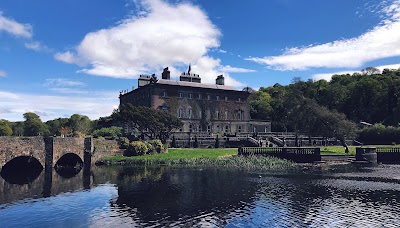Achill Island (Oileán Acla)
Overview
Achill Island is a hidden gem nestled off the west coast of County Mayo, Ireland. Known for its wild, rugged landscape and breathtaking views of the Atlantic Ocean, Achill spans nearly 57 square miles, making it the largest island off the coast of Ireland. It is connected to the mainland by the iconic Michael Davitt Bridge, which enhances its accessibility and charm.
Historical Significance
The island's rich history dates back to ancient times when Neolithic settlers recognized its abundant resources and isolation. Today, remnants of these early communities can be found in the megalithic tombs scattered across the island. Over the centuries, Achill evolved from these early settlements into a vibrant community that embraced subsistence farming, fishing, and eventually tourism.
The 19th century marked a turning point in Achill's accessibility. The construction of roads and the completion of the Michael Davitt Bridge in 1887 were pivotal developments that facilitated movement to and from the island. Named in honor of a prominent Irish nationalist, the bridge significantly boosted trade and communication, helping to connect the island with the mainland.
The Great Famine and Its Legacy
The mid-19th century brought hardship to Achill Island, as the Great Famine severely impacted the local population. Many islanders emigrated in search of better opportunities, leaving behind haunting ruins, particularly in the village of Slievemore. Here, famine huts stand as poignant reminders of this difficult period in the island's history.
Among Achill’s iconic landmarks is the desert Cloughmore area, formerly known as "Boley Village." This site was once dotted with temporary shelters for fishermen who fished the surrounding waters. Another significant historical site is the Achill Mission Colony, established in the 1830s by Protestant missionaries. While controversial, it played a crucial role in the island's development, introducing schools, churches, and even an orphanage to the local community.
Modern Tourism and Natural Beauty
In recent years, Achill Island has embraced tourism, drawing visitors from around the globe to its stunning beaches, such as Keem Bay and Dugort. With their pristine sands and crystal-clear waters, these beaches are perfect for surfing, swimming, and sunbathing. The island’s breathtaking natural beauty provides an ideal backdrop for relaxation and adventure alike.
For those seeking exploration, Achill’s hills and mountains, including Croaghaun and Slievemore, offer excellent hiking opportunities. These natural formations provide stunning vistas and a sense of solitude that’s hard to find elsewhere, making it a haven for adventure seekers and nature lovers.
Cultural Heritage and Community Spirit
Today, Achill Island continues to celebrate its rich heritage through various festivals and cultural events. The Achill Yawl Festival, for instance, honors traditional boat building and racing, captivating crowds with displays of local craftsmanship and seafaring skills. Music and arts festivals further pay homage to the island’s vibrant culture and traditions.
Despite the changes over the years, Achill Island retains its quaint charm, inhabited by a close-knit community known for their warm hospitality. Visitors will find cozy cottages, guesthouses, and charming pubs, where they can enjoy traditional Irish music and hearty meals, making them feel right at home.
Achill Island's journey from a Neolithic settlement to a thriving tourism hub is woven with a rich tapestry of history, culture, and community spirit. Whether you’re exploring ancient relics or soaking in the island's natural beauty, Achill offers an enduring allure that captures the hearts of both visitors and residents alike.








